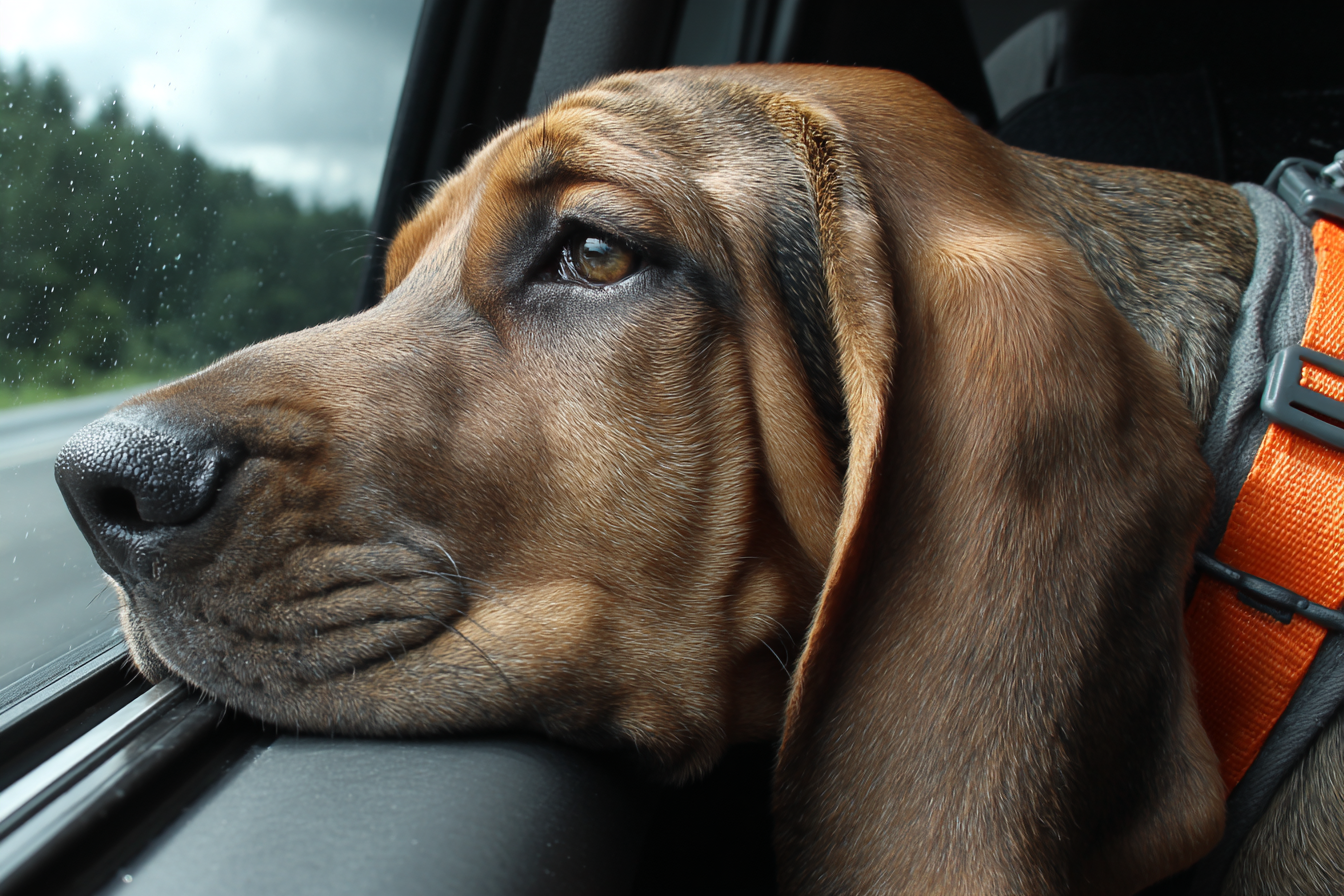Traveling with a Bloodhound can be a rewarding experience, combining your love for adventure with the company of a truly unique and affectionate companion. However, this breed’s distinct characteristics—such as their large size, remarkable scenting ability, and sensitive nature—mean that thoughtful preparation is essential to keep them safe and comfortable on the road, at airports, or on outdoor excursions. Whether you’re embarking on a weekend getaway or a long-distance trip, these practical tips will help you ensure your Bloodhound’s well-being every step of the way.
Preparing Your Bloodhound for Travel
Before hitting the road or boarding a plane, familiarizing your Bloodhound with the idea of travel is crucial. Start by taking short car rides to help them get accustomed to the movement and surroundings. During these initial trips, bring along favorite toys or treats to create positive associations.
Bloodhounds have an excellent sense of smell and can easily be distracted by enticing scents outside the car window. Supervised introduction to travel environments can help them stay calm and focused during real trips. Additionally, ensure your Bloodhound’s vaccinations and vet checkups are up to date to prevent any health complications while away from home.
Car Safety Recommendations
When traveling by car, safety is paramount for both you and your Bloodhound. Their size and strength require secure restraint methods designed specifically for dogs. Using a crash-tested dog seatbelt harness, travel crate, or an automotive dog barrier can protect your Bloodhound in sudden stops or accidents.
Here are key safety recommendations to keep in mind:
- Never allow your Bloodhound to ride with their head sticking out the window, as this can risk injury from debris or sudden stops.
- Keep air vents adjusted so your dog receives fresh air without being in a direct draft, which could lead to chilling or respiratory issues.
- Plan for frequent breaks on long drives to give your Bloodhound opportunities to stretch, hydrate, and relieve themselves.
- Avoid feeding large meals immediately before travel to reduce the risk of motion sickness or bloat, which the Bloodhound breed can be prone to.
Long-Distance Travel Considerations
Long journeys require additional planning to accommodate your Bloodhound’s endurance and comfort. Consider the timing of travel to avoid extreme heat or cold, as Bloodhounds have loose skin that can be vulnerable to sunburn or chill.
For multi-day trips, research dog-friendly accommodations and rest areas beforehand. Many parks and hotels welcome dogs, but it’s important to confirm their pet policies, especially for a large breed like the Bloodhound.
If you’re flying, familiarize yourself with airline regulations regarding pets. Bloodhounds typically should be transported in a well-ventilated, airline-approved travel crate that is large enough for them to stand, turn, and lie down comfortably.
Whenever possible, try to book direct flights and avoid peak travel times to reduce stress. Additionally, check if your destination requires any special health certificates or quarantine procedures to avoid surprises upon arrival.
Pack Essentials for Your Dog
Preparing a travel kit for your Bloodhound will ensure you have everything needed to maintain their routine and comfort. Here’s a checklist of must-have items:
- Water and collapsible bowl: Hydration is critical during travel.
- Leash and harness: For safe control on breaks and at your destination.
- Food and treats: Bring enough familiar food to avoid digestive issues.
- Waste bags: To clean up after your dog in any environment.
- Blanket or bed: A cozy spot for rest can ease anxiety and fatigue.
- Toys and chews: Comforting distractions during downtime.
- Medications and health records: Important for any emergencies and vet visits.
- Grooming supplies: Especially wipes or towels to clean paws after outdoor adventures.
Dealing with Travel Anxiety
Bloodhounds are known for being gentle and friendly, but some can develop anxiety related to travel. Signs include excessive panting, pacing, whining, or destructive behavior. To soothe your dog:
- Establish a calm environment with familiar scents and items.
- Use positive reinforcement with treats and praise to reward calm behavior.
- Consider pheromone sprays, anxiety wraps, or natural calming supplements after consulting your veterinarian.
- Maintain a consistent routine before, during, and after travel.
- Bring along a trusted companion or familiar handler to provide reassurance.
Patience and gradual desensitization to travel can help your Bloodhound adjust over time.
Regulations and Documentation
When traveling, especially cross-border or by air, understanding and preparing required documentation can prevent delays and hassles. Bloodhounds typically require proof of vaccinations, including rabies, and potentially a recent health certificate issued within 10 days of travel.
If you plan to take your Bloodhound into national parks or public lands, check regulations on leash requirements and restricted areas. Some locations may have breed-specific rules or seasonal limitations.
For airline travel, review the individual airline’s pet policies carefully. Weight restrictions, crate specifications, and fees vary, so booking in advance and confirming all requirements are essential.
Enjoy Safe Adventures Together
Traveling with your Bloodhound opens up wonderful opportunities for bonding and exploration. Their curiosity and friendly nature make them excellent companions for road trips, hiking, and even international adventures—provided you prepare thoughtfully and prioritize safety at every step. Remember to pack your patience, check all regulations, and create a comfortable environment for your bloodhound’s unique needs. Doing so ensures that every journey you take becomes a happy, stress-free memory for both you and your scent-loving friend.






